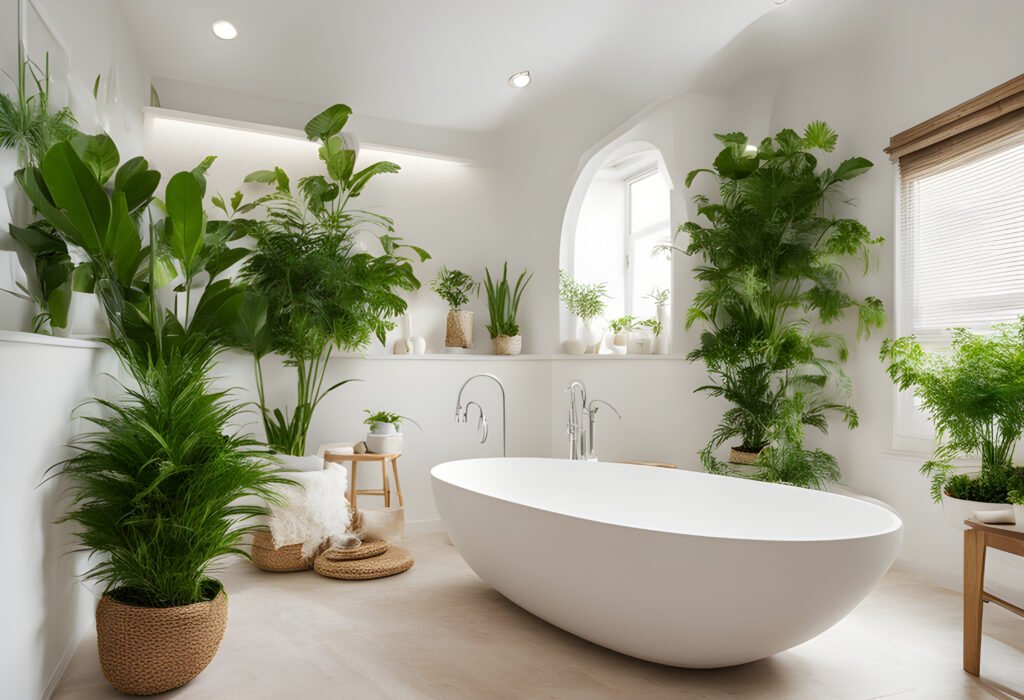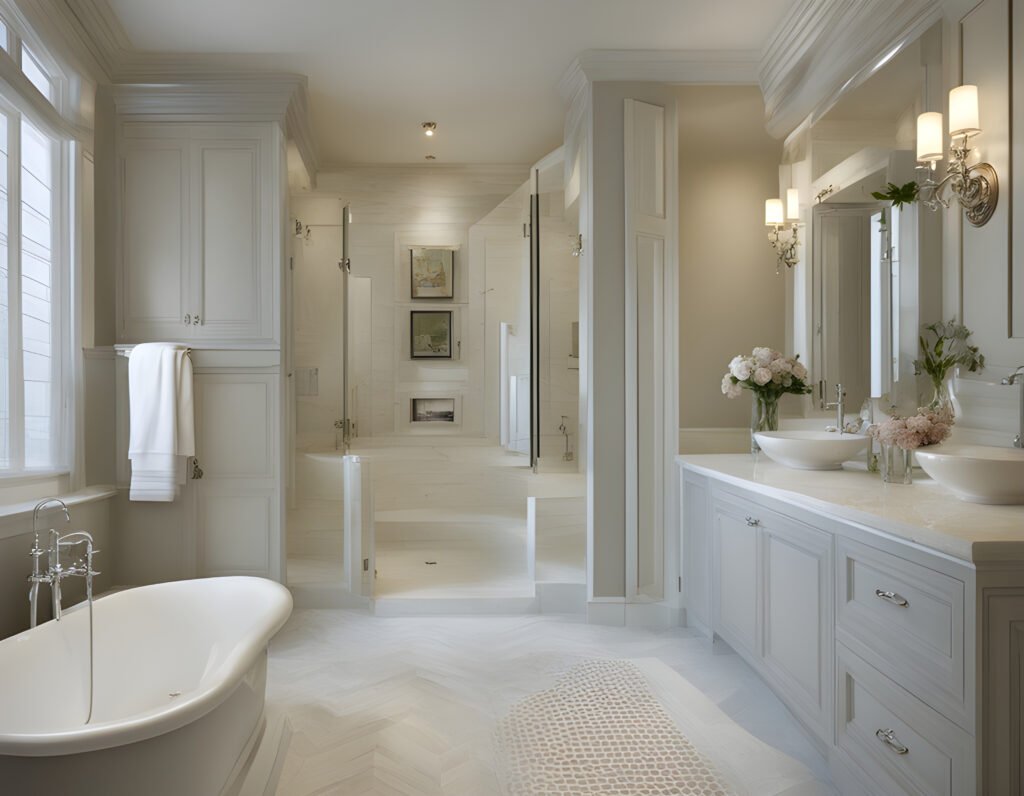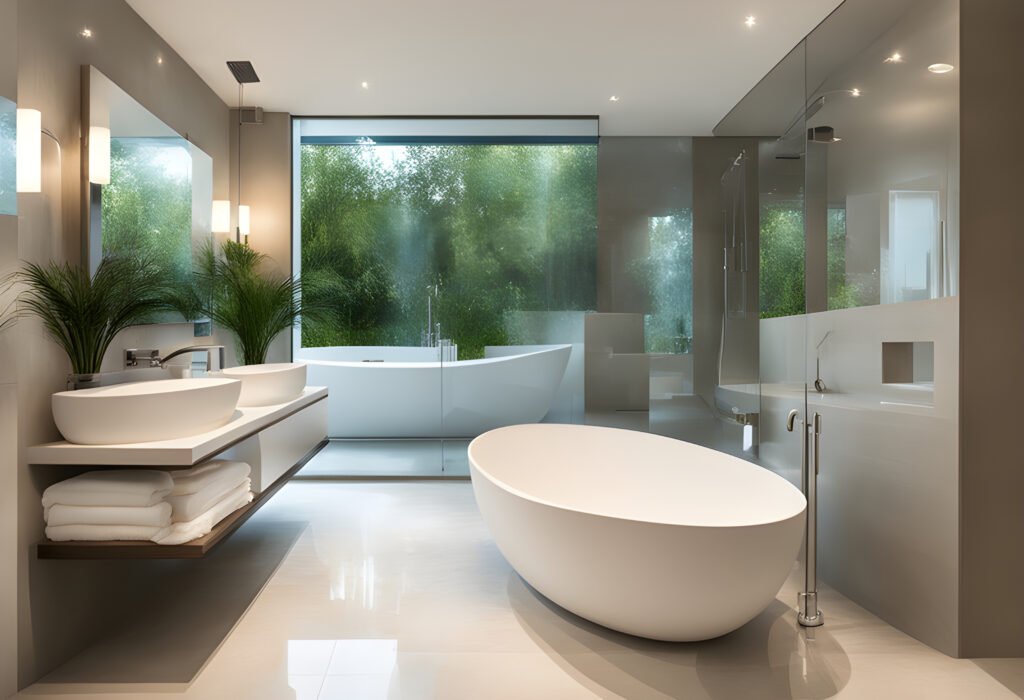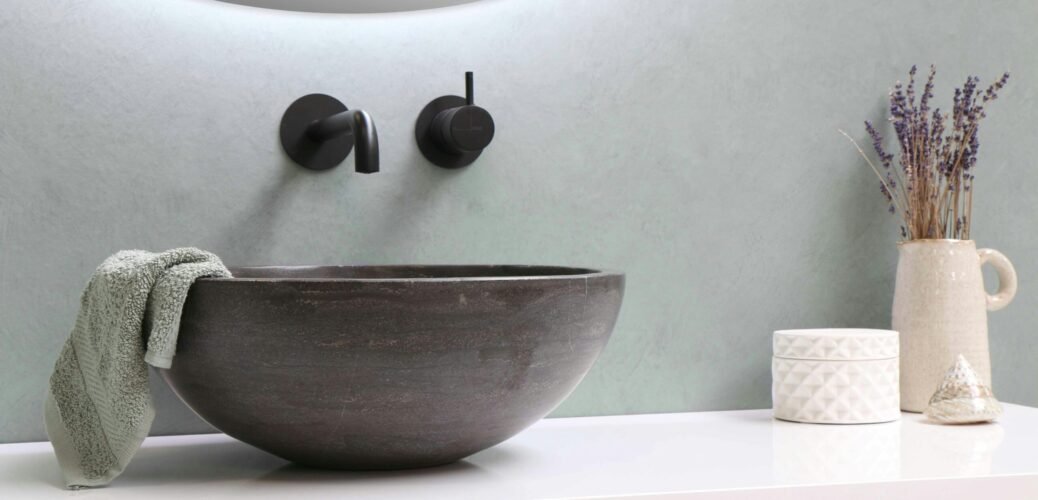Why a Beautiful Bathroom Matters: Unveiling the Significance of Aesthetic and Functional Design
Introduction: Setting the Scene
When one thinks of home design, the bathroom often doesn’t get as much attention as other areas. However, this seemingly small and private space plays a pivotal role in our daily routines. From the moment we wake up to our nightly preparations for sleep, the bathroom is an integral part of our lives. Therefore, its design holds substantial importance—not just for aesthetic reasons but also for functional well-being. A well-designed bathroom does more than just fulfill basic needs; it enhances overall quality of life by promoting comfort, relaxation, and even mental well-being.
Imagine starting your day in a chaotic, poorly designed bathroom—cluttered countertops, dim lighting, and awkward layout can set a negative tone for the rest of your day. Conversely, stepping into a beautiful, thoughtfully designed bathroom can elevate your mood and mental state. The harmonious blend of aesthetic and functional elements creates an environment where you can both refresh and unwind. More so, studies have shown that a visually pleasing environment has a direct positive impact on one’s mental health.
In this blog post, we will delve into why a beautiful bathroom matters, exploring the key components that contribute to both the aesthetic and functional design. We will examine how elements such as lighting, color schemes, fixtures, and overall layout combine to create a space that is both practical and pleasing to the senses. By understanding the significance of these elements, you can make informed decisions that enhance your bathroom’s appeal and functionality, ultimately enriching your everyday life.

Historical Perspectives on Bathroom Design
The evolution of bathroom design is a fascinating journey, reflecting broader cultural and technological trends throughout history. In ancient civilizations such as Rome and Greece, public baths were central to social life and health. These spaces were not just utilitarian; they embodied luxury and grandeur, adorned with intricate mosaics, marble, and sophisticated plumbing systems. The Romans, particularly, were pioneers in water engineering, using aqueducts to supply baths and homes with fresh water, underscoring the significance of hygiene and public health.
During the Middle Ages, however, the grandeur of Roman baths declined, particularly in Europe, where rudimentary and functional designs became the norm. Bathing practices were minimal, often due to the scarcity of water and the complexity of maintaining it without modern systems. Despite this, other cultures, such as the Ottomans, maintained a rich tradition of beautiful and elaborate bathhouses, evidenced by the Turkish Hammams, which combined architectural beauty with social and ritual functions.
The Renaissance and Enlightenment periods marked a rebirth of aesthetics in bathroom design, driven by advances in science and a renewed interest in classical antiquity. Wealthy households began integrating more ornate and private bathing spaces, reflecting the era’s emphasis on personal refinement and comfort. However, it wasn’t until the 19th century that bathrooms began to resemble those we recognize today. The advent of indoor plumbing and mass-produced sanitary ware revolutionized residential bathroom design, making modern amenities accessible to a broader population. Victoriana’s elaborate and decorative styles also influenced bathroom aesthetics significantly during this period.
In the 20th century, bathroom design continued to adapt, influenced by the ethos of modernism, which emphasized functionality, simplicity, and the use of new materials. The post-war era saw an increase in suburban homes with separate, well-appointed bathrooms. The introduction of color and innovative design ideas evolved further, turning bathrooms into personal retreats.
Today, modern bathroom design reflects a blend of historical influences and cutting-edge innovations, promoting both functionality and aesthetic appeal. Understanding this historical context enriches our appreciation of contemporary bathrooms and their evolution into luxurious sanctuaries that cater to well-being and style.
The Psychological Impact of a Beautiful Bathroom
A beautifully designed bathroom can significantly influence one’s emotional and mental well-being. The impact of colors, materials, and lighting in a bathroom setting plays a pivotal role in affecting our mood and overall mental health. This is not just an aesthetic preference, but a scientifically-backed assertion that aesthetically pleasing environments correspond with reduced stress levels and enhanced happiness.
Color psychology suggests that different hues can evoke distinct emotional responses. For instance, soft blues and greens are often associated with calmness and relaxation, making them ideal choices for bathroom decor. On the other hand, warmer tones like light yellows can instill a sense of warmth and positivity. The strategic choice of colors in a bathroom can thus create an environment conducive to unwinding and mental refreshment.
Materials used within the bathroom also contribute to its psychological impact. Natural materials like wood and stone can bring a sense of tranquility and connection to nature, whereas sleek, polished surfaces might impart a modern, clean feel. The texture and touch of these materials can evoke comfort and reassurance, thereby positively impacting one’s psychological state.
Moreover, lighting is another critical element in bathroom design that influences mood. Natural light is known to enhance serotonin production, contributing to improved mood and energy levels. In contrast, artificial lighting, when carefully selected and positioned, can create a relaxing and inviting space. Options like dimmable lights allow for an adaptable environment that can be tailored to personal preferences, ultimately fostering a sense of well-being.
Scientific studies have demonstrated that aesthetically pleasing environments can reduce cortisol levels, the body’s primary stress hormone. In these studies, individuals exposed to well-designed spaces reported feeling more relaxed and content compared to those in less appealing settings. This suggests that investing in a beautiful bathroom could be an essential step toward reducing daily stress and enhancing overall happiness.
Supporting these scientific perspectives, personal anecdotes and expert opinions underscore the importance of a thoughtfully designed bathroom. Many individuals recount how a beautifully renovated bathroom became their sanctuary, a place to retreat and rejuvenate. Experts in interior design often emphasize that the bathroom, though often overlooked, can significantly impact one’s quality of life.
Functionality and Design: Striking the Perfect Balance
Creating a bathroom that marries functionality with design is essential for both visual appeal and everyday usability. Striking this balance can transform an ordinary space into a serene haven where beauty meets practicality. One of the foremost considerations is storage solutions. Adequate storage is crucial to maintaining a clutter-free environment, and this can be achieved through innovative cabinetry and cleverly designed shelving that enhance the room’s aesthetic. Opt for wall-mounted cabinets or under-sink storage to maximize available space without encroaching on the area’s open feel.
Fixture placement is another critical aspect. Thoughtful positioning of faucets, showerheads, and other fixtures not only contributes to a streamlined look but also enhances the functionality of the space. For example, placing the sink and countertop adjacent to the shower or bath can facilitate easy access and improve workflow within the bathroom. Furthermore, selecting fixtures that complement the overall design theme—whether modern, classic, or minimalist—can seamlessly blend functionality with style.
Ease of maintenance plays a significant role in ensuring that the bathroom remains both beautiful and practical over time. Choosing durable materials for surfaces—such as tile, stone, and high-quality sealants—can withstand the wear and tear of daily use while being easy to clean. Additionally, integrating elements like groutless surfaces and water-resistant materials can reduce maintenance efforts and preserve the bathroom’s pristine appearance.
Incorporating natural light whenever possible can also enhance both functionality and design. Skylights, large windows, and strategically placed mirrors contribute to a bright and welcoming space, reducing the need for artificial lighting and creating a connection with the outdoors. Lastly, consider the use of color and texture to enhance the overall ambiance. Neutral tones paired with textured accents can create a sophisticated look that remains timeless and easy to maintain.
By thoughtfully combining beauty and practicality, it is possible to design a bathroom that serves as a functional sanctuary. The integration of smart storage solutions, optimal fixture placement, and easy-to-maintain materials ensures that the space is both aesthetically pleasing and highly efficient

Current Trends in Bathroom Design
In today’s dynamic world of interior design, bathrooms have evolved into spaces that seamlessly blend functionality with aesthetic appeal. One of the most noticeable trends is the shift towards minimalist design, characterized by clean lines, uncluttered spaces, and a focus on simplicity. Popular color schemes often emphasize neutral tones such as whites, grays, and earth tones, punctuated with accents of bold colors to create a balanced and serene environment.
Materials also play a crucial role in contemporary bathroom design. Natural materials like stone, wood, and concrete are frequently used to add texture and warmth. These elements are often combined with sleek metals like brushed nickel and chrome to evoke a sense of modern elegance. The integration of eco-friendly materials, such as recycled glass and sustainable timber, reflects a growing environmental consciousness among homeowners and designers alike.
Innovative technology is transforming bathrooms into smart, user-friendly spaces. Smart mirrors equipped with touch controls for lighting, fog resistance, and even internet connectivity are becoming a staple in modern bathrooms. Heated floors are another popular feature, providing a luxurious and comfortable experience. Additionally, the advancement of water-efficient fixtures, such as low-flow toilets and faucets, not only align with eco-friendly trends but also contribute to significant water conservation.
Moreover, the concept of creating a spa-like retreat within the home has gained traction. Features like rain showers, freestanding bathtubs, and ambient lighting systems designed to enhance relaxation are increasingly sought after. These elements help in cultivating an atmosphere of tranquility and escape, making daily routines feel indulgent and rejuvenating.
By staying informed about these currents trends in bathroom design, homeowners can make informed decisions that enhance both the beauty and functionality of their spaces. Whether renovating or building afresh, incorporating these modern elements can significantly elevate the overall experience of the bathroom, transforming it into a sanctuary of style and comfort.
Economic Value: How a Beautiful Bathroom Adds to Your Home’s Worth
A beautifully designed bathroom can significantly boost the value of your home, offering a compelling return on investment. According to real estate experts, bathroom renovations consistently rank among the top home improvement projects that deliver the highest returns when selling a property. A well-executed bathroom upgrade can increase your home’s market value by as much as 20%, making it a strategic investment for homeowners looking to maximize their property’s financial potential.
Data-driven insights from the Joint Center for Housing Studies at Harvard University reveal that bathroom renovations can recoup up to 70% of their cost at resale. This makes sense considering that potential buyers prioritize modern, aesthetically pleasing, and functionally superior bathrooms when evaluating homes. An outdated or poorly designed bathroom can be a deal-breaker, whereas a stylish and well-maintained one can significantly enhance your home’s appeal, making it more attractive to prospective buyers.
Moreover, the impact of a beautiful bathroom extends beyond just increased resale value. A meticulously designed bathroom can also expedite the selling process. Homes with updated bathrooms tend to spend less time on the market, as they stand out among competing properties. This reduction in market time not only alleviates the stresses associated with prolonged listings but also minimizes holding costs such as mortgage payments, utilities, and maintenance.
Incorporating contemporary fixtures, elegant tiling, energy-efficient lighting, and advanced plumbing systems can elevate the perceived quality of your entire home. Real estate professionals frequently advise investing in bathroom upgrades, particularly if you plan to sell within a few years. The visual and functional enhancements made to your bathroom can make a lasting impression during open houses and property viewings, leading to higher offers and a quicker sale.
Ultimately, the economic value of a beautiful bathroom is clear. It not only increases home value and attracts potential buyers but also ensures a strong return on investment, cementing the importance of prioritizing bathroom aesthetics when considering home improvement projects.
Sustainability in Bathroom Design
Incorporating sustainable and eco-friendly principles into bathroom design has become increasingly significant in recent years. As the global emphasis on environmental responsibility intensifies, more homeowners are opting for eco-conscious choices in their living spaces. A sustainable bathroom design goes beyond aesthetics, positively impacting both the environment and the health of the inhabitants.
One key aspect of sustainable bathroom design is the use of sustainable materials. These materials range from recycled tiles and reclaimed wood to innovative products like bamboo and cork, which are recognized for their renewable properties. Not only do these materials reduce environmental impact, but they also introduce natural textures and unique aesthetic qualities to the bathroom space, creating a harmonious blend of beauty and functionality.
Water conservation plays a crucial role in eco-friendly bathroom designs. Installing water-saving fixtures, such as low-flow toilets, water-efficient showerheads, and faucet aerators, can significantly reduce water consumption. These fixtures are engineered to use less water without compromising performance, helping homeowners lower their water bills while promoting responsible water usage. Additionally, modern technologies like dual-flush systems offer further customization in water conservation efforts.
Energy-efficient lighting is another vital component of sustainable bathroom design. LED lights, known for their longevity and low energy consumption, provide an excellent alternative to traditional incandescent bulbs. Implementing natural lighting solutions, such as skylights or larger windows, can also reduce the dependency on artificial lighting during daylight hours. This not only conserves energy but also enhances the overall ambiance and mood of the bathroom space.
Beyond environmental benefits, sustainable bathroom designs contribute to healthier living environments. Using eco-friendly materials reduces the emission of volatile organic compounds (VOCs) that can deteriorate indoor air quality. Moreover, cleaner, low-flow water fixtures diminish the growth of mold and mildew, ensuring a more hygienic space. By integrating these sustainable elements, homeowners can foster a bathroom environment that supports both personal well-being and ecological balance.

Practical Tips for Creating a Beautiful Bathroom
Creating a beautiful bathroom that combines both aesthetic appeal and functionality is an achievable goal, regardless of budget constraints or space limitations. The key lies in thoughtful planning and attention to detail. Below are practical tips to help you transform your bathroom into an inviting and well-designed space.
Firstly, selecting the right colors is crucial. Light colors can make a small bathroom appear larger and more open. Shades of white, soft blues, and light grays are excellent choices. For a more dynamic look, consider creating an accent wall with a vibrant color or patterned tiles. This approach adds visual interest without overwhelming the space.
Fixtures play a pivotal role in enhancing bathroom aesthetics. Opt for modern, sleek designs that complement your overall theme. Chrome or brushed nickel finishes are popular choices for faucets and showerheads, providing a contemporary look that is easy to maintain. Additionally, investing in a stylish vanity can serve as a focal point, contributing to the bathroom’s overall appeal.
The right accessories can also make a significant difference. Coordinating towels, rugs, and shower curtains can tie the room together. Incorporate elements like framed art, decorative storage baskets, or plants to add personality and warmth to the space. Remember, less is often more – avoid clutter to maintain a clean and elegant look.
For those on a budget, DIY projects offer an affordable way to upgrade bathroom aesthetics. Simple changes such as repainting, replacing hardware, or installing new lighting can have a profound impact. Adding a backsplash, re-grouting tiles, or updating cabinetry with fresh paint or new knobs are cost-effective ways to rejuvenate your bathroom.
These practical tips empower you to create a beautiful bathroom that marries function with style. Whether through careful selection of colors, thoughtful fixture choices, or affordable DIY upgrades, minor adjustments can result in remarkable transformations. By focusing on both aesthetics and functionality, you can enjoy a space that is as beautiful as it is practical.

